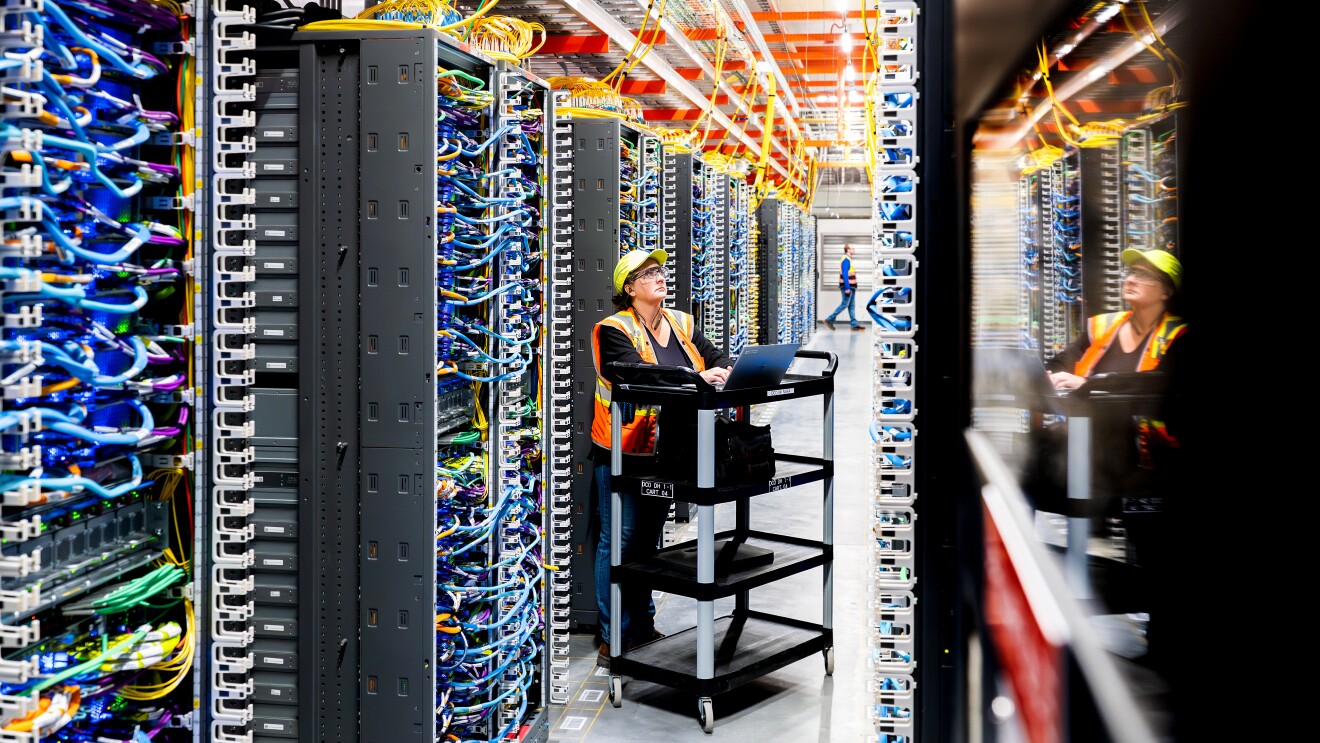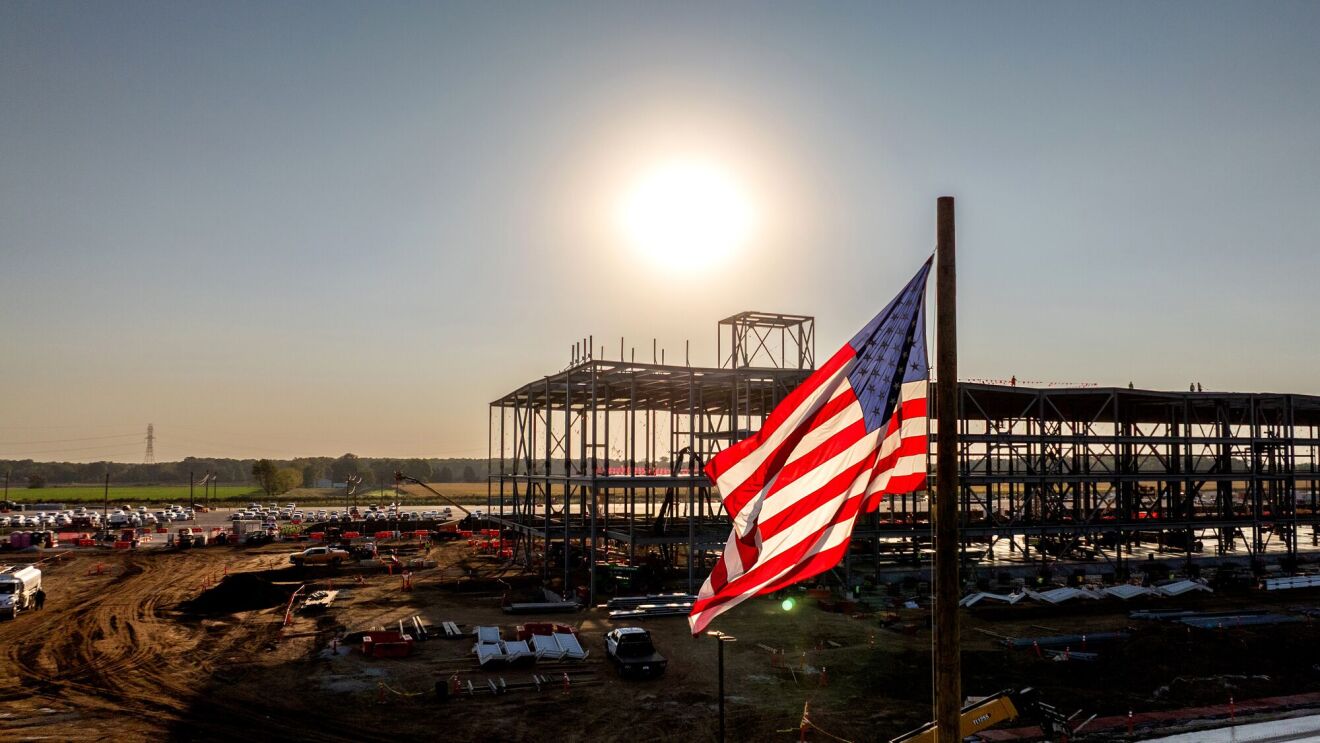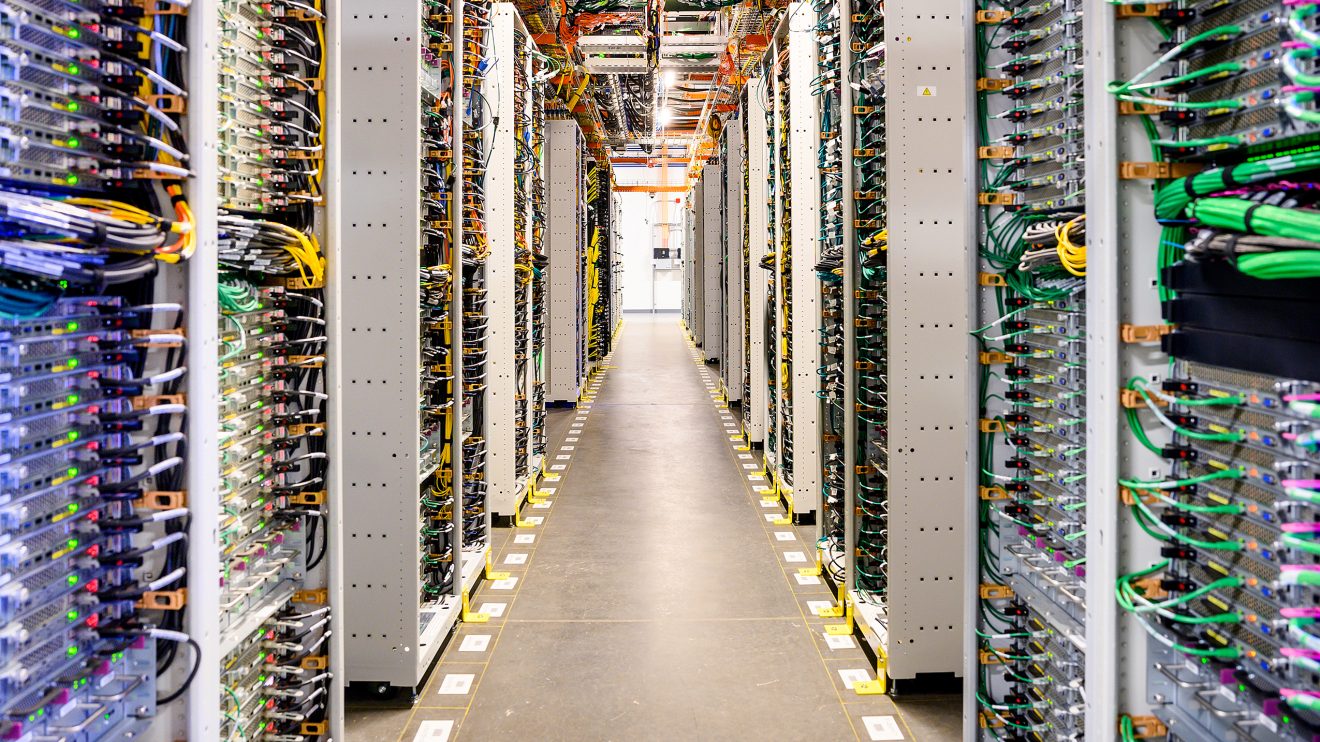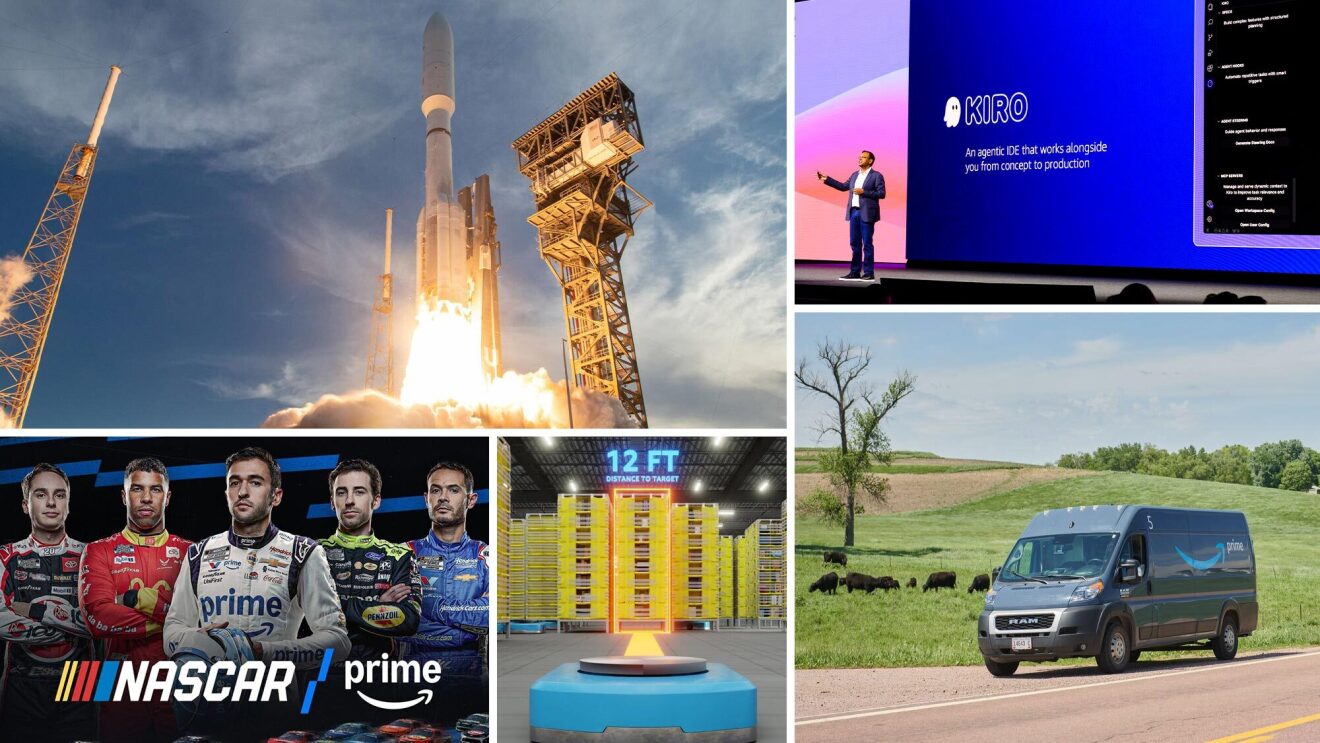When Amazon launched nearly 25 years ago, it was with the mission "to be Earth’s most customer-centric company." This goal continues today, but Amazon's customers are worldwide now, and have grown to include millions of shoppers, sellers, developers, authors, and other types of content creators. Each of these groups has different needs, and as we wrap up 2019 in photos, here are some of the ways Amazonians innovated on their behalf.

Photo by AMAZON
Since January, Amazon Scout has delivered thousands of smiles to customers, expanding its test run from its birthplace of Washington state to California. These all-electric, autonomous delivery devices have safely navigated around trash cans, skateboards, lawn chairs, the occasional snow blower, and the many other obstacles found in residential neighborhoods, while rolling along sidewalks at a walking pace. Scout is still in field test mode and the expansion to the Irvine, CA, area is just another in the many steps forward for this new delivery system. Over time, Scout will provide more sustainability and convenience to customer deliveries.

Photo by JORDAN STEAD
In February, Amazon announced Project Zero, a new program that empowers brands to help drive counterfeits to zero. Powered by Amazon's machine learning, automated protections continuously scan our stores and proactively remove suspected counterfeits. Brands provide key data points about themselves—such as logos or trademarks—and Amazon scan over 5 billion daily listing update attempts, looking for suspected counterfeits. Brands no longer need to contact us to remove counterfeit listings from our stores. Instead, they have the unprecedented ability to do so themselves using our self-service tool. We also use this data to strengthen our automated protections to better catch potential counterfeit listings proactively in the future. Brands can also apply a unique code on every unit they manufacture for an enrolled product, allowing Amazon to scan and confirm the authenticity of every one of those products purchased in Amazon's stores.

Photo by JORDAN STEAD
Ever wonder how Amazon gets your packages to you so efficiently? Even in person, the scale of an Amazon Fulfillment Center can be difficult to grasp: the Baltimore fulfillment center, for example, spans the equivalent of 28 football fields and can hold millions of items on any given day. The climate is comfortable year-round, and the workspace is safe. Associates pick, pack, and ship Amazon.com customer orders at more than 175 similar facilities worldwide. You can tour one of our North American fulfillment centers and see each part of the process. On an hour-long tour, you'll also learn about some of the roles and benefits available for associates at fulfillment centers, including details on the following: Career Choice, a program that offers 95 percent prepaid tuition and fees for coursework in high-demand career areas; where a holiday job can lead; and how on-the-job training can lead to a tech job without college. In 2019, over 300,000 visitors passed through our doors. There are 23 fulfillment centers in the United States and Canada that offer public tours.
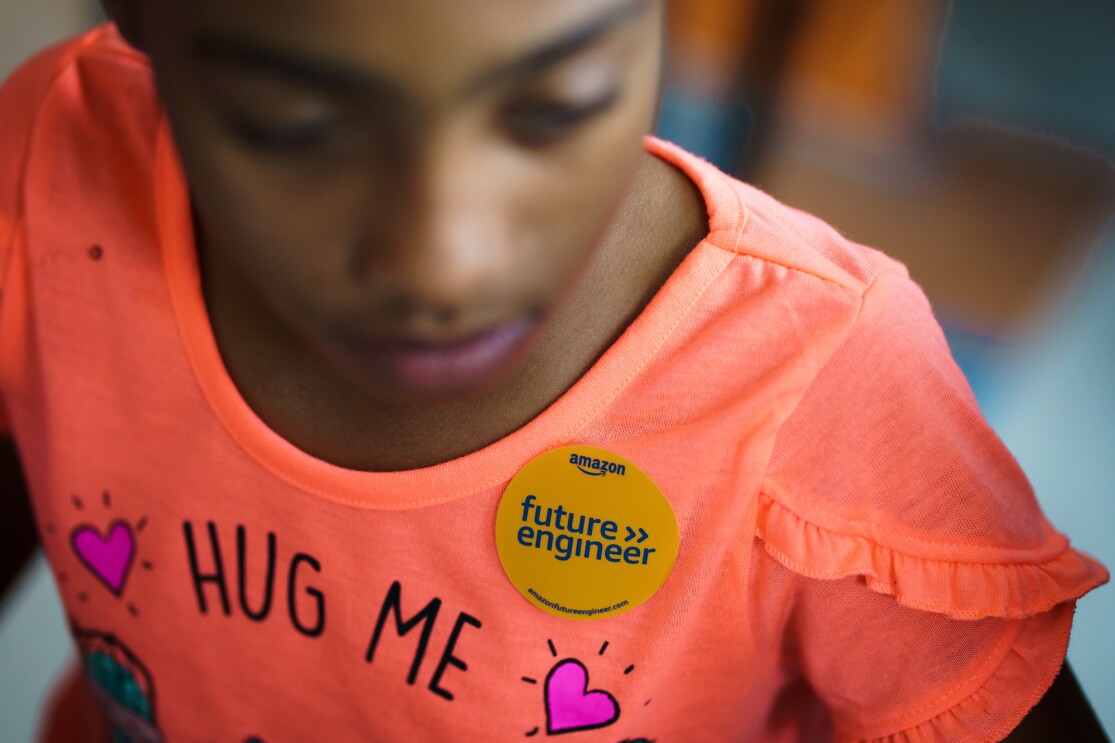
Photo by JORDAN STEAD
Long-term thinking and innovating at scale are mindsets ingrained in Amazon's culture. It's no surprise, then, that our approach to making sure all children and young adults are set up for long-term success is rooted in a scalable, long-term program called Amazon Future Engineer (AFE). AFE is a childhood-to-career program intended to empower, educate, and train hundreds of thousands of students each year to pursue careers in computer science through after school programs, coding camps, scholarship grants, and internships. Amazon Future Engineer is funding computer science courses in more than 2,000 high schools supporting students from underserved and underrepresented communities across the country. Amazon is funding full-year Intro and AP computer science courses, primarily for public Title I schools that have never offered AP computer science courses before. Amazon also invests in 100 $10,000 per year scholarships for students pursuing computer science degrees in college.

Photo by JORDAN STEAD
Amazon first set roots in Kentucky in 1999 when it opened two fulfillment centers. Today, Kentucky is home to 14 Amazon fulfillment and sortation centers, one customer service center, and two Whole Foods Market stores. Amazon has invested more than $8 billion in the state and created more than 12,500 full-time jobs. In May of this year, Amazon broke ground for a new Air Hub located in Hebron, Kentucky, at the Cincinnati/Northern Kentucky International Airport. The Air Hub will open in 2021 as part of the company's commitment to ensure fast, free shipping for customers, as well as creating more than 2,000 additional jobs for the local community.

Photo by JORDAN STEAD
At Amazon's first re:MARS Conference (Machine Learning, Automation, Robotics, and Space), Jeff Wilke, CEO of Worldwide Consumer, unveiled the latest Prime Air drone design, fully electric and capable of flying up to 15 miles to deliver packages under five pounds to customers in less than 30 minutes. Prime Air is one of many sustainability initiatives to help achieve the company's pledge to reach 80 percent renewable energy by 2024 and 100 percent renewable energy by 2030 on its path to net zero carbon by 2040. When it comes to emissions and energy efficiency, an electric drone, charged using sustainable means, traveling to drop off a package is an improvement over a car on the road.

Photo by JORDAN STEAD
Amazon Technical Academy is among a growing list of programs that provide Amazon employees the resources to gain critical new skills for in-demand roles, at Amazon and beyond. The company has pledged to skills train or "upskill" 100,000 employees by 2025, backed by a $700 million investment. Amazon's promise creates new opportunities for our employees to get trained at their place of work, in high-demand areas like medicine, software engineering, IT, and machine learning.

Photo by AMAZON
Prime Day first came to life for customers on July 15, 2015, as a way to celebrate Prime members on Amazon's 20th birthday. We continue to innovate on behalf of the customer, with Prime Day growing each year. Prime Day 2019 started at midnight PDT on Monday, July 15 and—for the first time ever—ran for 48 hours. There were 18 participating countries including U.S., U.K., Spain, Singapore, the Netherlands, Mexico, Luxembourg, Japan, Italy, India, Germany, France, China, Canada, Belgium, Austria, Australia, and—new this year—United Arab Emirates. Pictured here is a scene from Amazon's annual post-Prime Day concert, featuring Katy Perry, in Seattle, Washington.

Photo by JORDAN STEAD
Many cities in the U.S., including Amazon's headquarter regions of Seattle, Washington, and Arlington, Virginia, continue to face challenges with housing affordability and homelessness. Amazon announced an $8 million total donation—$5 million to Plymouth Housing in Seattle and $3 million to the Arlington Community Foundation in Arlington—as well as a $5 million total match on employee donations made to 20 select nonprofits addressing housing and homelessness. Combined, this new $13 million commitment will help create more housing options for families, veterans, and people experiencing homelessness in our two headquarter regions. This is in addition to the more than $130 million invested in our existing partnerships with Mary's Place and FareStart in Seattle.

Photo by JORDAN STEAD
Amazon and Global Optimism announced The Climate Pledge. Amazon is the first to sign this pledge, which calls on signatories to be net zero carbon across their businesses by 2040—a decade ahead of the Paris Accord's goal of 2050. Shipment Zero is Amazon's vision to make all our shipments net zero carbon, with 50 percent of all shipments net zero by 2030. To do this, we'll focus on sustainable process improvements, recycled materials, investments in electrification, and renewable energy initiatives.

Photo by AMAZON
Jobseekers line up for Amazon Career Day, a series of events across the U.S. where anyone can learn more about the 30,000 full and part-time jobs available at Amazon locations across the country, from the company's headquarters and tech hubs to datacenters and fulfillment centers. There are jobs for people with all types of experience, education, and skill levels—from entry-level roles at Amazon's fulfillment centers working with the latest robotics technology, software development engineers helping make Alexa smarter, or computer vision scientists building the technology behind Amazon Go.

Photo by DAVE QUIGG

Photo by JORDAN STEAD
Amazon now employs more than 21,000 veterans and military spouses in full- and part-time roles across the U.S. and is on track to surpass its pledge to hire more than 25,000 by 2021. Amazon has also increased its commitment from $1 million to $3 million to support veterans interested in starting their own package delivery business as Amazon Delivery Service Partners, offering $10,000 in reimbursements to help cover the startup costs for qualified candidates. About one-third of Amazon Delivery Service Partners are veterans, and it's their busiest time of the year delivering for the holidays. Amazon's dedicated last-mile delivery network is on track to deliver 3.5 billion customer packages globally in 2019. Since the Delivery Service Partner program launched in 2018, Amazon has released hundreds of products and features to help operate safe and successful package delivery businesses. Today, there are more than 800 Amazon Delivery Service Partners in the last-mile network, employing 75,000 drivers in the United States.

Photo by JORDAN STEAD
The number of small businesses across the U.S. that have chosen to grow with Amazon is remarkable. To honor and celebrate these businesses, Amazon introduced the Amazon Small Business Spotlight Awards in 2019. Since then, more than 1,300 U.S. small businesses have nominated themselves for the awards. Finalists were selected based on their origin story and company vision; customer centricity; and product innovation, selection and value.
In December, Amazon announced the winners, who were determined by customer votes, in three categories: Small Business of the Year (nutpods), Woman-Owned Small Business of the Year (1818 Farms) and Small Business Owner Under 30 of the Year (Habit Nest). Finalists were selected based on their origin story and company vision; customer centricity; and product innovation, selection and value.
In December, Amazon announced the winners, who were determined by customer votes, in three categories: Small Business of the Year (nutpods), Woman-Owned Small Business of the Year (1818 Farms) and Small Business Owner Under 30 of the Year (Habit Nest). Finalists were selected based on their origin story and company vision; customer centricity; and product innovation, selection and value.
01 / 14


